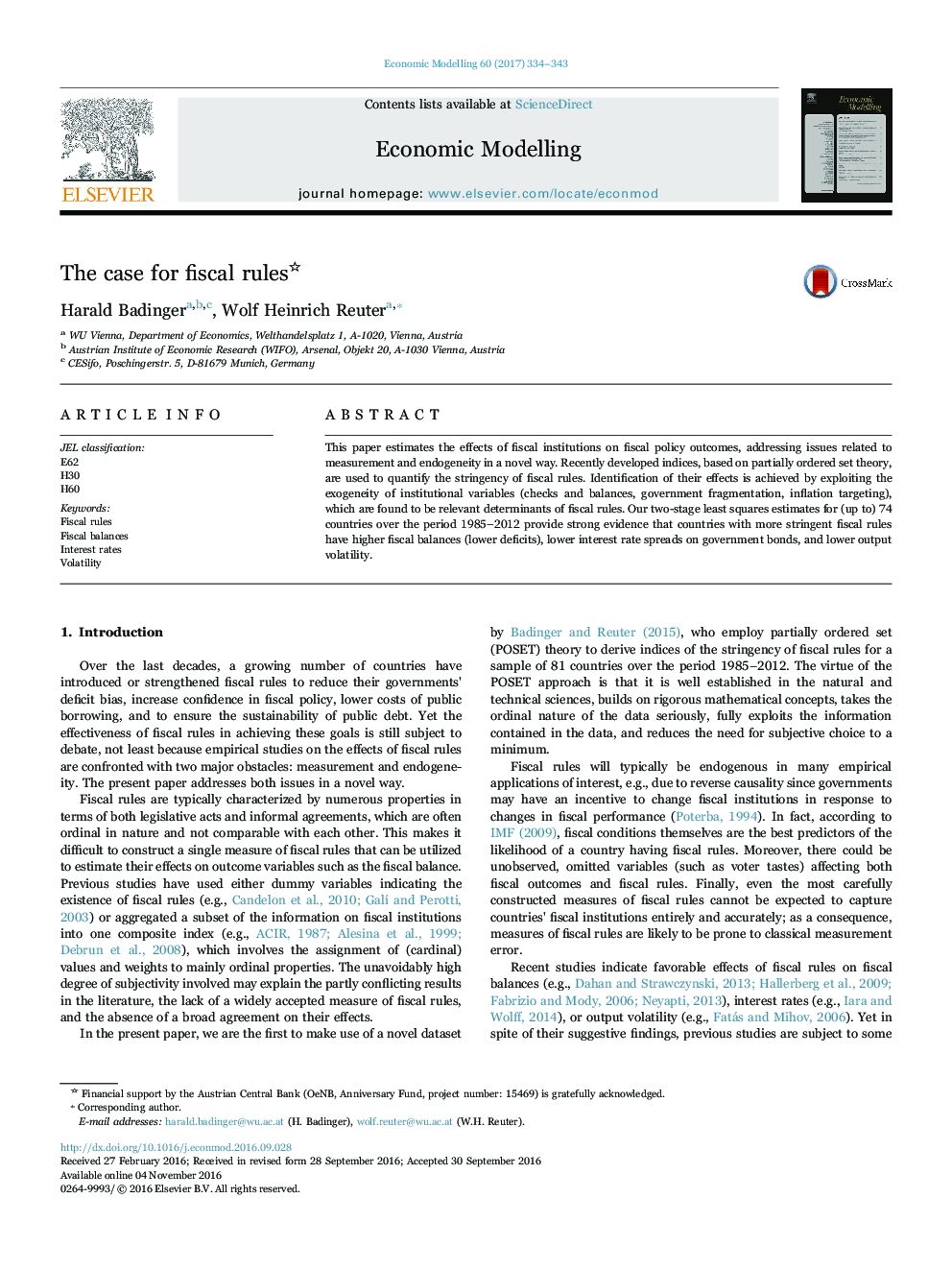| Article ID | Journal | Published Year | Pages | File Type |
|---|---|---|---|---|
| 5053210 | Economic Modelling | 2017 | 10 Pages |
â¢We estimate the effects of fiscal rules for a sample of up to 74 countries over 1985-2012.â¢We use new measures of the stringency of fiscal rules, based on POSET theory.â¢We use institutional determinants of (endogenous) fiscal rules as instruments.â¢Stringent fiscal rules improve fiscal performance (fiscal balances, yield spreads).â¢Stringent fiscal rules lower output volatility by reducing fiscal policy volatility.
This paper estimates the effects of fiscal institutions on fiscal policy outcomes, addressing issues related to measurement and endogeneity in a novel way. Recently developed indices, based on partially ordered set theory, are used to quantify the stringency of fiscal rules. Identification of their effects is achieved by exploiting the exogeneity of institutional variables (checks and balances, government fragmentation, inflation targeting), which are found to be relevant determinants of fiscal rules. Our two-stage least squares estimates for (up to) 74 countries over the period 1985-2012 provide strong evidence that countries with more stringent fiscal rules have higher fiscal balances (lower deficits), lower interest rate spreads on government bonds, and lower output volatility.
